Top 20 Best AI APIs for Seamless Integration in Your App
Published on Jun 17, 2025
Get Started
Fast, scalable, pay-per-token APIs for the top frontier models like DeepSeek V3 and Llama 3.3. Fully OpenAI-compatible. Set up in minutes. Scale forever.
Artificial intelligence is becoming a key element of business success across industries. Organizations want to leverage AI’s capabilities to optimize operations, improve customer experiences, and drive innovation. Building machine learning models that successfully tackle real-world problems can take time and resources. Many businesses don’t have the means to create an AI solution from scratch for their machine learning framework. Instead, they can use existing models and APIs to achieve their goals faster. This article will help you find the best AI APIs to accelerate your AI development for real-world impact.
Inference’s AI inference APIs can help you achieve your objectives quickly and easily. Our solutions simplify the integration of machine learning models into applications so that you can deploy AI to production without the hassle.
What is an AI API?

AI APIs function as intermediaries, enabling seamless integration of advanced AI capabilities into software applications without building complex systems from scratch. Like traditional APIs, they facilitate data exchange and interoperability between software systems, which is essential for delivering smooth, intelligent user experiences.
As AI becomes central to modern digital applications, AI APIs have become vital tools for developers. They connect your app to powerful AI models for tasks such as text analysis, image recognition, and speech processing, enhancing functionality and efficiency while accelerating development.
How Do AI APIs Work?
AI APIs’ secret lies in the advanced technologies they use under the hood.
Some of these technologies include:
- Natural language processing (NLP): It allows APIs to understand and generate human language by analyzing:
- Syntax
- Semantics
- Context
- Text analysis: It will enable APIs to analyze and extract information from text.
- Sentiment detection: It helps APIs determine the sentiment or emotion in text.
- Entity recognition: This will enable APIs to identify and classify different text-mentioned entities.
AI APIs as a Gateway to Scalable Machine Learning Integration
AI APIs also act as interfaces to access and utilize machine learning models. Powerful machine learning algorithms drive these ML models, often requiring large workloads and powerful machines. Having AI/ML models run as services behind API endpoints so that applications can freely call those endpoints marks significant progress toward AI democratization.An AI API provides a clean interface between the analytics and the apps. You don’t have to worry about running and hosting the models, which results in faster development cycles and reusability.
Why Use AI APIs?
AI APIs streamline development and enhance user experience by enabling fast, scalable integration of intelligent features. Instead of building complex systems from scratch, developers can focus on innovation and user engagement while AI APIs handle data processing, automation, and personalization at scale.
These interfaces support growing applications by easily adapting to increased data and user demands.
Real-world applications demonstrate the value of AI APIs:
- Amazon and Netflix use them to power recommendation engines, tailoring suggestions based on user behavior and preferences.
- Google Translate employs AI APIs for real-time text and speech translation across languages.
- Intercom and Drift leverage NLP APIs in AI chatbots to:
- Automate support
- Reduce response times
- Boost customer satisfaction
AI APIs make modern applications more:
- Agile
- Intelligent
- User-centric
Types of AI APIs
Various types of AI APIs exist to fulfill specific needs and functionalities. Every kind of AI API offers unique capabilities you can leverage to enhance your applications in particular ways.
Computer Vision APIs: For Image Recognition
Computer vision APIs, including optical character recognition (OCR), enable applications to analyze and interpret visual content from images and videos. These APIs can perform complex tasks such as:
- Image classification
- Object detection
- Facial recognition
- Scene understanding
Its functions are widely used in industries like:
- Security
- Retail
- Social media
Examples of Computer Vision API Capabilities:
- Google Cloud Vision API
- Classifies images into thousands of categories.
- Detects faces within images.
- Identifies individual objects with high precision.
- Google Video Intelligence API
- Recognizes objects, places, and actions in stored and real-time video streams.
- Ideal for:
- Content moderation
- Video indexing
- Dynamic video analysis
Impact of Computer Vision APIs:
- Expanded Understanding: These APIs significantly enhance what applications can "see" and comprehend, enabling automation and advanced insights.
- New Possibilities: Open doors to more:
- Powerful automation
- Improved content analysis
- Data-driven decision-making
Speech Recognition APIs: For Converting Audio to Text
Speech recognition APIs have several key features:
- They convert audio files into text, so applications can understand and respond to spoken language.
- They support real-time transcription for live audio streams, making them ideal for applications like live captioning and voice-controlled interfaces.
- They offer speaker identification. This is very useful in scenarios where multiple speakers are present.
- They provide language detection, allowing applications to identify the different languages people speak.
- These features make speech recognition APIs a powerful tool for many applications.
Developers can integrate speech recognition APIs to create applications that offer voice control features and support for multiple languages. This allows developers to create accessible applications for users with disabilities or enable hands-free operation in various contexts.
Natural Language Processing APIs: For Understanding and Generating Human Language
Natural language processing (NLP) APIs leverage natural language processing models to analyze and understand human language. These machine learning models can perform a variety of tasks, including:
- Sentiment analysis
- Text classification
- Entity recognition
Applications that require deep language understanding often use NLP models through APIs. For instance, OpenAI’s models can:
- Translate languages
- Summarize text
- Answer specific questions
NLP APIs also support custom models that can be tailored to specific use cases. Whether you need to analyze customer feedback, automate content moderation, or build conversational agents, NLP APIs provide the tools to extract valuable insights from text data.
Translation APIs: For Breaking Down Linguistic Barriers
Translation APIs bridge linguistic barriers by supporting multiple languages. They offer features like dynamic results and domain-specific customization. They use advanced neural machine translation models to provide high accuracy and fluency for applications that require reliable and nuanced translations.These APIs become invaluable tools for accurately translating specialized jargon in professional settings.
Related Reading
20 Best AI APIs for Developers
1. Inference API: The Serverless Solution to Inference Workloads

Inference delivers OpenAI-compatible serverless inference APIs for top open-source LLM models, offering developers the highest performance at the lowest cost in the market.
Beyond standard inference, Inference provides specialized batch processing for large-scale async AI workloads and document extraction capabilities designed explicitly for RAG applications.
Start building with $10 in free API credits and experience state-of-the-art language models that balance cost-efficiency with high performance.
2. Tavus API: The Ultimate Personalized Video API
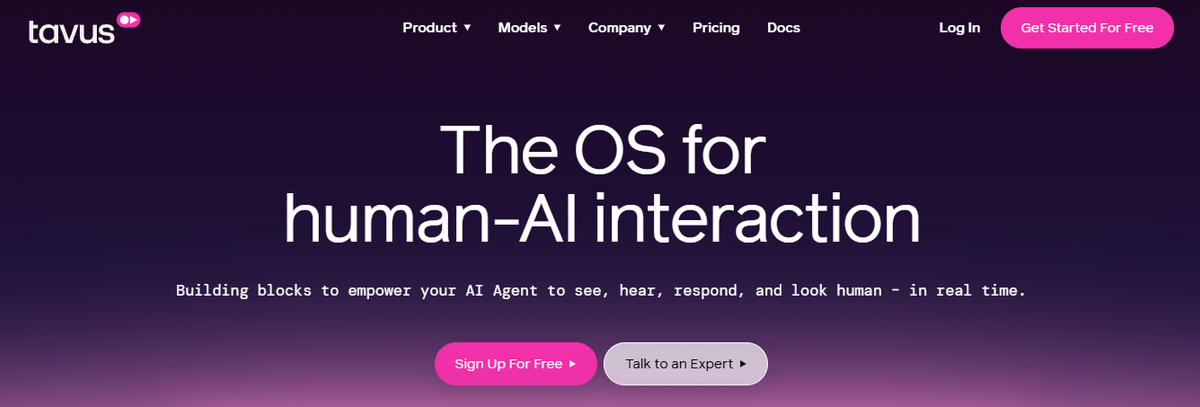
The Tavus API, powered by the Phoenix model, simplifies video production by embedding advanced text-to-speech capabilities into applications. Developers can white-label Tavus’ technology to enable users to create personalized video content from scripts without building complex video systems. This API generates hyper-realistic videos with digital replicas of users, effortlessly turning text into engaging video content.
With seamless integration, developers can focus on their core product while offering hyper-realistic videos as part of their app experience. Tavus also provides AI-powered lip-syncing and voice-dubbing, delivering ultra-realistic videos in over 30 languages.
3. Imagga API: The Image Analysis Powerhouse

The Imagga API offers image understanding and analysis technologies designed to automate handling of extensive image collections. It’s designed for businesses that manage extensive visual data.
The API analyzes images to understand their content and provides various insights. It offers customization options, allowing companies to tailor the API to their needs and integrate it into existing applications.
4. Vision AI: Unlocking Insights Hidden in Images and Video

Vision AI uses the Cloud Vision API to enable applications to analyze images and videos intelligently. It automates the extraction and classification of information from visual content. Vision AI can be used for tasks such as:
- Optical character recognition (OCR)
- Object detection
- Facial recognition
5. IBM Watson Speech to Text: The Gold Standard for Transcribing Speech to Text
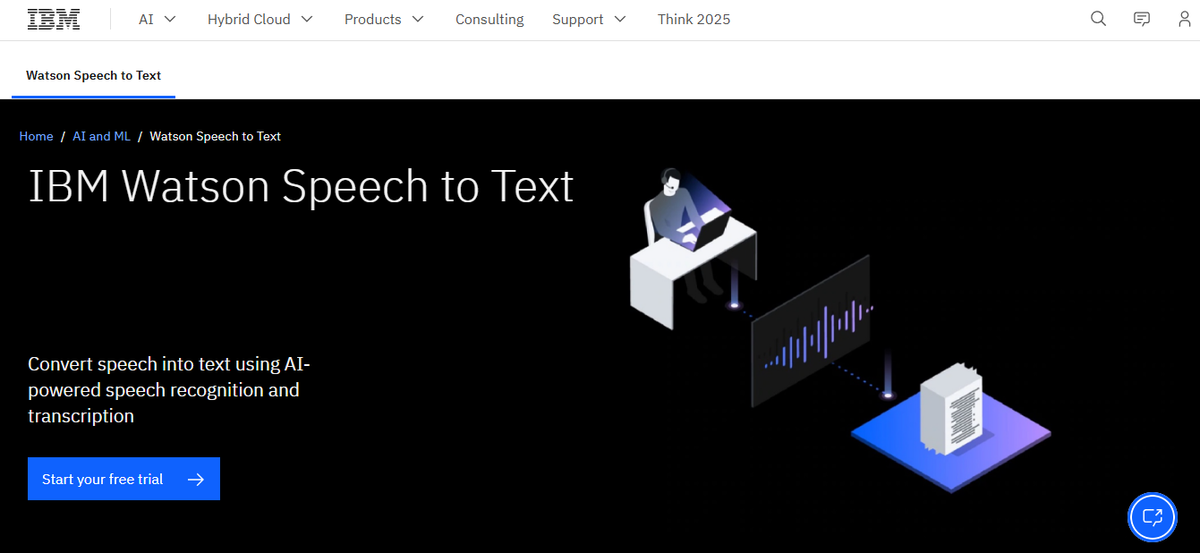
IBM Watson Speech to Text is an AI-powered service that accurately transcribes audio to text in multiple languages. It is designed for:
- Customer self-service
- Agent assistance, and more
It offers out-of-the-box functionality with advanced machine learning models or customization options for specific use cases. The service can be used by:
- Call centers
- Media companies
- Legal firms
6. Google Cloud's Speech-to-text API: Accurate Speech Recognition for Any Application
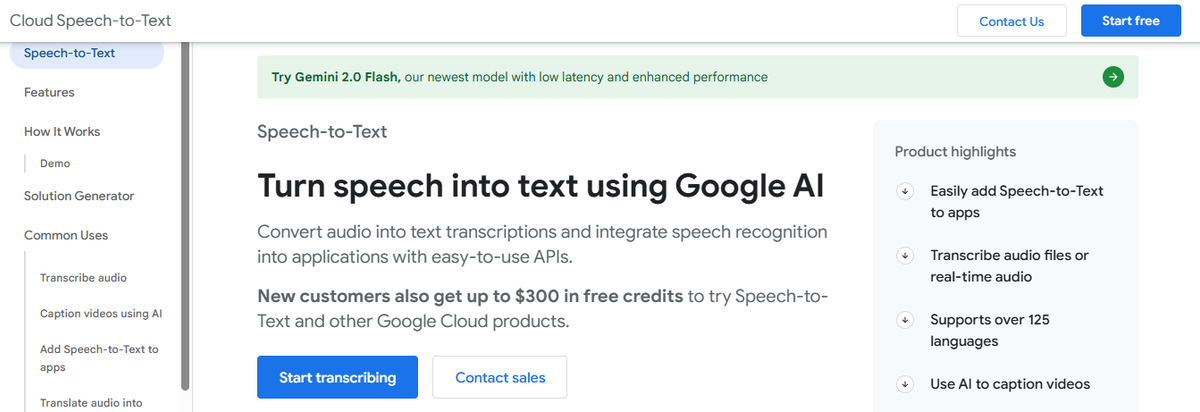
Google Cloud's Speech-to-Text API is a tool that leverages neural network models to convert audio to text accurately. It supports various languages and can transcribe audio from real-time streams and pre-recorded files. This can be used for applications in customer service, media production, and accessibility solutions.
7. Stream: Using AI to Detect Harmful Content in Real Time

Stream's Auto-Moderation API is an AI-driven tool designed to enhance trust and safety across digital platforms by identifying, monitoring, and resolving harmful content. This API uses advanced machine learning models and configurable policies to adapt to your community’s specific context and expectations. It can be used for any user-generated content environment that requires real-time moderation to maintain a safe and inclusive space.
8. DeepAI API: Enhancing Images and Generating Visuals from Text
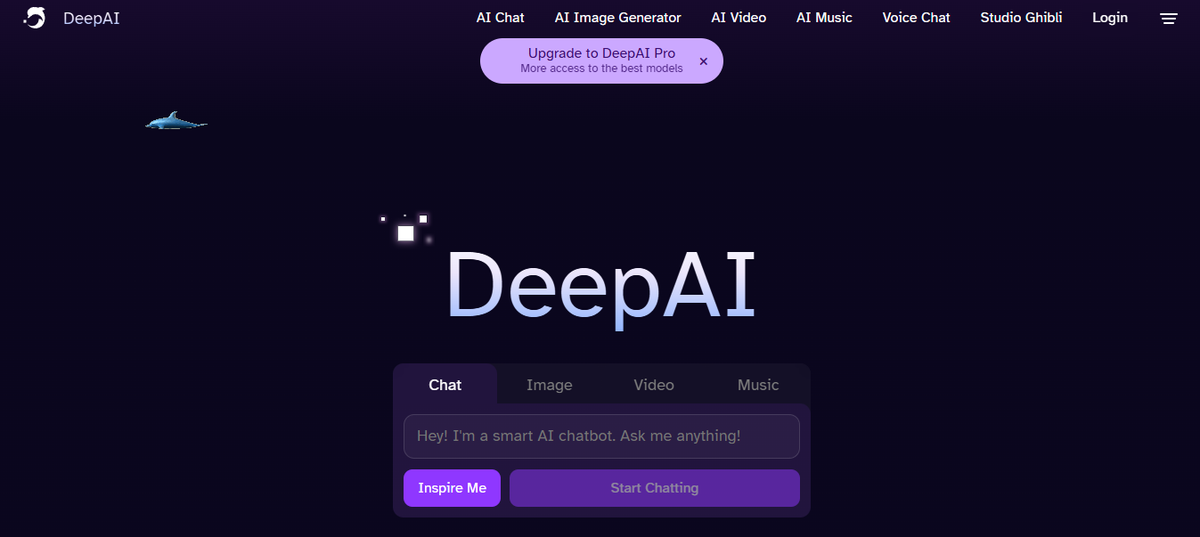
DeepAI API supports a variety of creative and analytical tasks, particularly in image and text processing. It can generate images from:
- Text descriptions
- Enhance image resolution
- Perform image manipulations like:
- Colorization
- Noise reduction
This API can be used by developers, content creators, and marketers who require visual content.
9. Pixray API: A Customizable Text-to-Image Tool for Creatives

The Pixray API is a Replicate tool for generating images from text descriptions. It’s designed for artists, designers, and developers who require quick and customizable image generation.
This API utilizes techniques such as Perception Engines and CLIP-guided GAN imagery to produce detailed images that align with the prompts.
10. Microsoft Azure Cognitive Services API: A Collection of APIs to Augment Human Capability
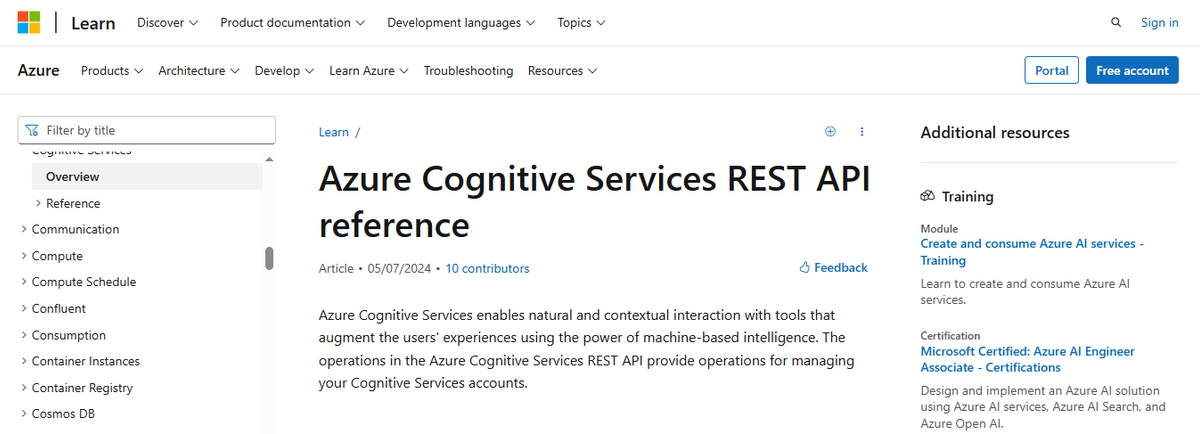
Microsoft’s Azure Cognitive Services is a collection of APIs that enables text conversion, language understanding, and more into applications. It's designed to augment user experiences across various applications, from emotion and sentiment detection to speech and vision capabilities. This is meant to be applied to multiple industries with minimal coding effort.
11. Amazon AI API: A Robust Set of Machine Learning Tools from AWS
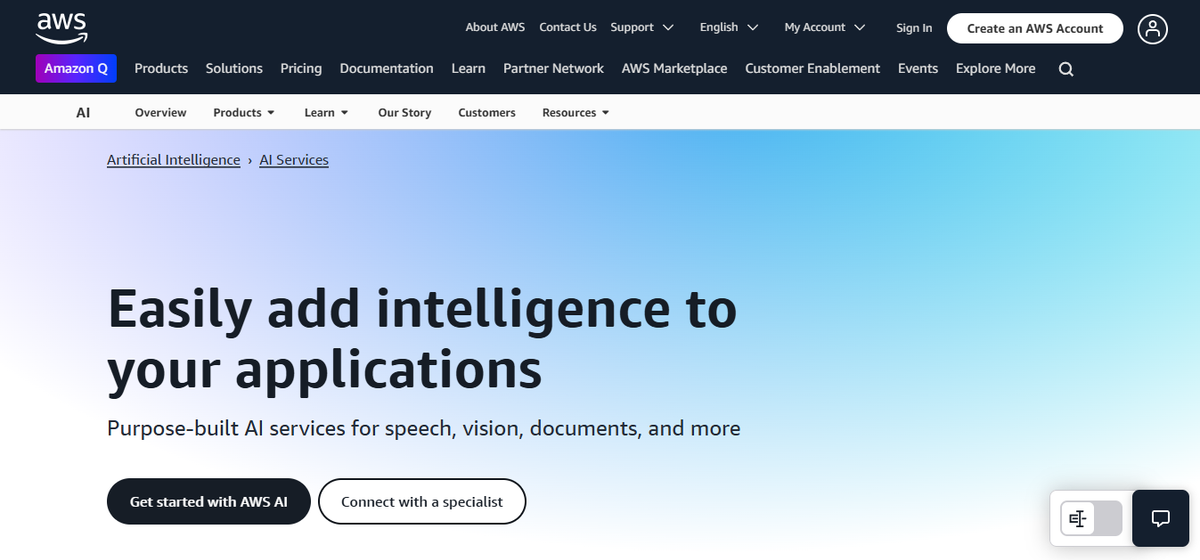
Amazon AI API, part of AWS (Amazon Web Services), provides a suite of machine learning services and tools that facilitate the integration of AI capabilities into various applications.
These APIs are designed to enhance applications with advanced features such as:
- Natural language understanding
- Speech recognition
- Image analysis
Amazon AI APIs are used across a wide range of industries, including:
- Healthcare
- Finance
- Media
- Customer service
12. Clarifai API: Image and Video Recognition for Developers

The Clarifai API enables developers to implement image and video recognition capabilities into their existing applications. This API utilizes machine learning models to classify, detect, and segment images and videos in real time.
It can be used for:
- Content moderation
- Security surveillance
- Personalized customer experiences
13. OpenAI API: Access to the Best Natural Language Processing Models

The OpenAI API offers access to various AI models designed to handle tasks that involve understanding and generating human language. This API is capable of a wide range of functions, from translating languages to generating human-like text and even creating content such as:
- Articles
- Poems
- Code
It can be used by developers looking to incorporate AI technology into products that require:
- Natural language processing
- Machine learning
- Task automation
14. Wit.ai: A Free Natural Language Processing API
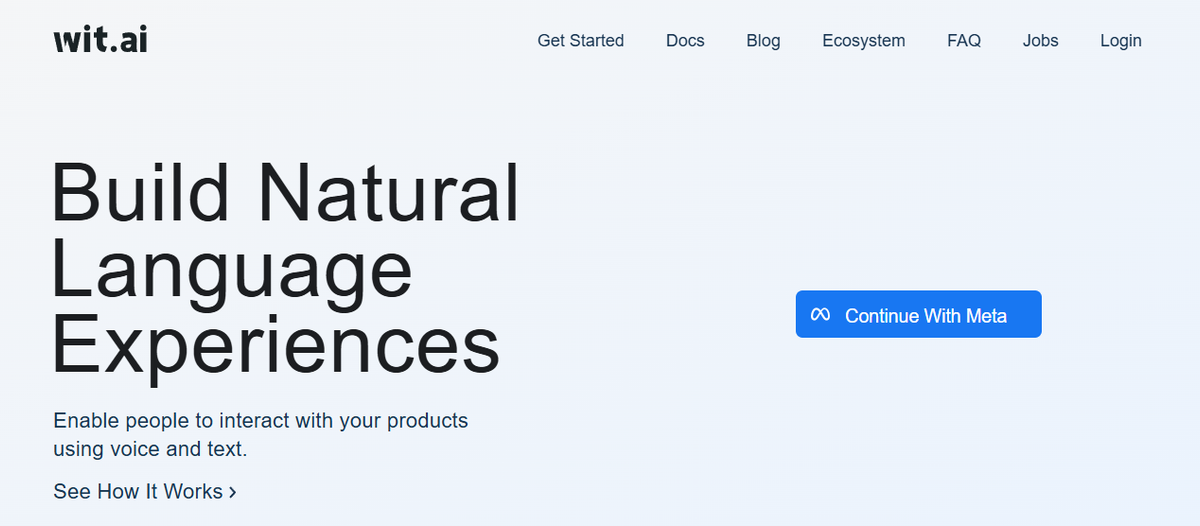
Wit.ai, now owned by Meta, offers a powerful and easy-to-use natural language processing API. It excels at understanding human language and turning it into actionable data, making it ideal for voice and chat-based applications. Wit.ai is also free to use, making it accessible for developers of all levels.
15. Komprehend API: An AI API for Text Analysis

Komprehend is an AI API focused on natural language processing and sentiment analysis. It provides insights into text data, making it valuable for developers working on:
- Customer feedback analysis
- Social media monitoring
- Content analysis
16. MonkeyLearn API: A Customizable Text Analysis API

MonkeyLearn offers easy-to-use machine learning tools for text analysis. This API is ideal for developers looking to add features to their applications, like:
- Keyword extraction
- Sentiment analysis
- Topic classification
MonkeyLearn API is highly customizable, allowing precise control over the AI’s output.
17. Hugging Face Inference API: The Leading API for Natural Language Processing Models

Hugging Face Inference API is a popular tool for deploying state-of-the-art NLP models among developers and data scientists. This API provides access to an extensive collection of pre-trained models for various NLP tasks, such as:
- Text generation
- Classification
- Summarization and more
Hugging Face has become a go-to for those who need an easy way to integrate advanced NLP capabilities into their applications.
18. Stability AI API: High-Quality Image Generation from Text Prompts

Stability AI specializes in providing high-quality image generation through its Stable Diffusion model, one of the leading tools for AI-powered art creation. This AI API allows users to create unique, high-resolution images from simple textual prompts. It is highly popular among digital artists, game developers, and marketers looking for innovative ways to generate visual content.
19. AssemblyAI: The Speech-to-Text API for Content Creators
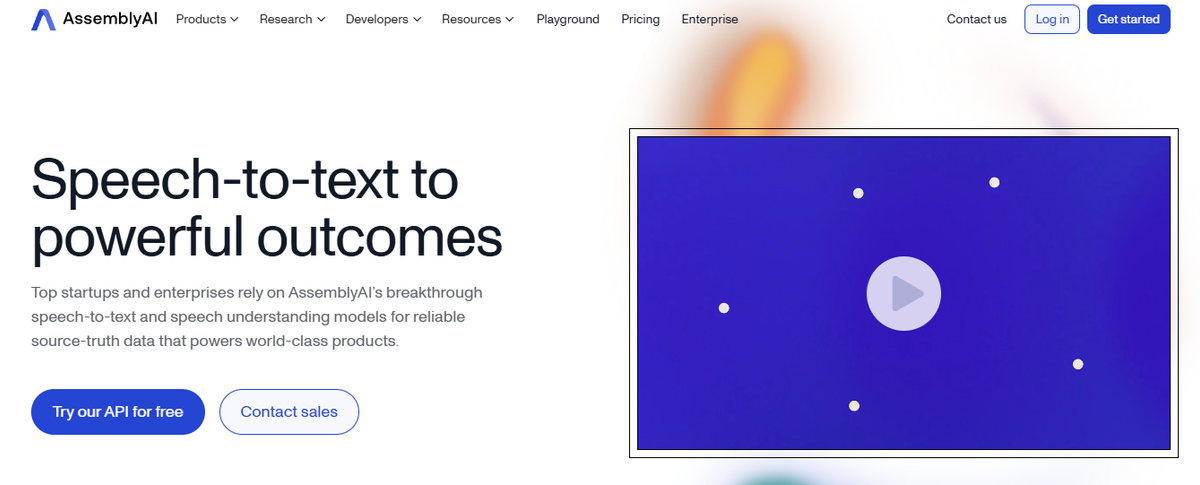
AssemblyAI is an AI API focused on speech-to-text technology. It offers high-quality transcription services with real-time capabilities and is widely used in podcasting, video captioning, and customer service call analysis applications. AssemblyAI also provides additional features such as sentiment analysis and keyword extraction.
20. Cohere API: Advanced Language Models for Natural Language Understanding

Cohere API offers access to advanced language models tailored explicitly for natural language understanding. It enables applications to process and understand text deeply, making it a powerful tool for developing intelligent search engines, summarization tools, and more.
21. OpenRouter – Free API
OpenRouter offers a range of LLMs for various tasks, making it a versatile choice for developers. The platform allows up to 20 requests per minute and 200 requests per day. Some of the notable models available include:
- DeepSeek R1
- Llama 3.3 70B Instruct
- Mistral 7B Instruct
Advantages
- High request limits
- A diverse range of models
- Pricing: Free tier available
22. Cerebras – Free API
Cerebras provides access to Llama models with a focus on high performance. The platform allows 30 requests per minute and 60,000 tokens per minute. Some models available include:
- Llama 3.1 8B
- Llama 3.3 70B
Advantages
- High request limits
- Powerful models.
- Pricing: Free tier available, join the waitlist
23. Groq – Free API
Groq offers various models for different applications, allowing 1,000 requests per day and 6,000 tokens per minute. Some models available include:
- DeepSeek R1 Distil Llama 70B
- Gemma 2 9B Instruct
Advantages
- High request limits.
- Diverse model options.
- Pricing: Free tier available
24. Scaleway Generative Free API
Scaleway offers a variety of generative models for free, with a rate of 100 requests per minute and 200,000 tokens per minute. Some models available include:
- BGE-Multilingual-Gemma2
- Llama 3.1 70B Instruct
Advantages
- Generous request limits
- Variety of models
25. OVH AI Endpoints – Free API
OVH offers free access to various AI models, allowing 12 requests per minute. Some models available include:
- CodeLlama 13B Instruct
- Llama 3.1 70B Instruct
Advantages
- Easy to use
- A variety of models
- Pricing: Free beta available
26. Together Free API
Together is a collaborative platform for accessing various large language models (LLMs), with no specific limits mentioned. Some models available include:
- Llama 3.2 11B Vision Instruct
- DeepSeek R1 Distil Llama 70B
Advantages
- Access to a range of models
- Collaborative environment
27. Fireworks AI – Free API
Fireworks offers a range of powerful AI models, with Serverless inference up to 6,000 RPM and 2.5 billion tokens per day. Some models available include:
- Llama-v3p1-405b-instruct
- deepseek-r1
Advantages
- Cost-effective customization
- Fast Inferencing.
- Pricing: Free credits are available for $1
28. Twelve Labs API
Twelve Labs offers an AI API specialising in video intelligence. It allows users to analyse and extract insights from video content. This API provides advanced features to video search, content moderation, and ad targeting, making it a vital tool for businesses that rely on video for customer engagement or media purposes.
Key Features
- Video Intelligence: Analyse video content for specific objects, scenes, or actions.
- Content Moderation: Automatically flag inappropriate or sensitive content in videos.
- Ad Targeting: Enhance video ads with AI-powered insights for better targeting.
29. Datature API
Datature offers a range of AI APIs for building, deploying, and managing machine learning models. Its intuitive interface simplifies processes such as data labeling, model training, and deployment, making it accessible even to teams with limited ML expertise.
Key Features
- No-code data labeling and annotation tools.
- Automated model training workflows.
- Scalable deployment for AI models.
- Multi-platform support for deployment (cloud, edge, and mobile).
- Collaboration tools for AI teams.
30. Symbl.ai API
Symbl.ai’s AI APIs offer conversational intelligence capabilities, enabling real-time and asynchronous analysis of speech and text. Features like sentiment analysis, topic modelling, and action item detection empower applications to derive more profound insights into conversations.
Key Features
- Real-time transcription and speech-to-text capabilities.
- Sentiment analysis for voice and text.
- Topic modeling and entity recognition.
- Automated meeting summaries and action item generation.
- Integration with voice, video, and chat platforms.
31. Deepgram
Voice is the future of human-computer interaction, and Deepgram is at the forefront of this revolution. Their speech recognition API boasts impressive accuracy and a wide range of features, making it ideal for applications like transcription, voice assistants, and call center predictive analytics.Deepgram is a cloud-based speech recognition platform that uses deep learning to transcribe and analyze spoken language. It offers a range of features, including real-time transcription, speaker diarization, and sentiment analysis.
Why Deepgram?
- High accuracy: Deepgram's models are trained on massive datasets and consistently outperform competitors in accuracy tests.
- Real-time transcription: Get transcriptions in real-time, ideal for live events or call center monitoring.
- Customization: Train custom models tailored to your specific use case, such as industry jargon or accents.
- Speaker diarization: Identify and track individual speakers in a conversation, making it easier to analyze multi-person interactions.
- Sentiment analysis: Gain insights into the emotions expressed in spoken language.
32. Replicate
Replicate is a cloud-based platform that lets you run machine learning models with a simple API. It provides access to a wide range of open-source models for tasks like image generation, style transfer, and super-resolution.
Why Replicate?
- Vast model library: Replicate offers a growing collection of open-source AI models, covering various domains and use cases.
- Ease of use: With a simple API and intuitive interface, Replicate makes it easy to get started with AI, even if you're not a machine learning expert.
- Scalability: Replicate's cloud infrastructure can handle demanding workloads, so you can scale your AI applications as needed.
- Community-driven: Replicate encourages collaboration and contributions from the open-source community, fostering innovation and continuous improvement.
33. RunwayML
RunwayML is a no-code platform that makes AI accessible to creatives. It provides a user-friendly interface for interacting with AI models, as well as tutorials and resources to help you get started.
Why RunwayML?
- Creative focus: RunwayML is specifically designed for artists and designers, with tools and models tailored to creative workflows.
- Intuitive interface: The platform's no-code interface makes it easy to experiment with AI, even if you don't have extensive machine learning expertise.
- Wide range of creative tools: RunwayML offers tools for image generation, video editing, style transfer, and more.
- Collaboration: Collaborate with other creatives on projects and share your work with the community.
- Education: RunwayML provides tutorials and resources to help you learn about AI and its creative applications.
Related Reading
Start Building with $10 in Free API Credits Today!
Inference delivers OpenAI-compatible, serverless inference APIs for the leading open-source LLM models to provide developers with the highest performance at the lowest cost. Beyond standard inference, Inference provides specialized batch processing for large-scale async AI workloads and document extraction capabilities designed explicitly for RAG applications.
Start building with $10 in free API credits and experience state-of-the-art language models that balance cost efficiency with high performance.